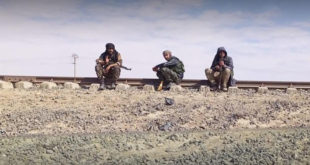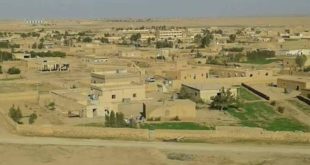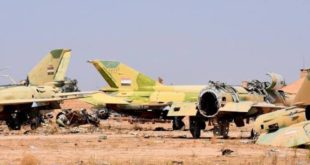Introduction
Over the past few years, the term ‘demographic change’ has been associated with the Assad regime and Iranian militias in Syria, on account of the steps taken by the regime and Iran in appropriating the properties of people who have been displaced from their cities and lands.
Myriad pieces of writing and articles have addressed this topic and made references to it without uncovering the incontrovertible truth or an accurate account of the situation or phenomenon whereby the regime or Iran deals with real property or lands belonging to IDPs who left them due to the raging war in their regions – whether this meets the conditions of ‘demographic change’ or an otherwise different descriptor that has not been used yet.
In this article, we will highlight the regime practices in appropriating homes and lands in Deir Ezzor province and shed light on the activities and operations of Iran and its arms in this field.
The information mentioned in this article is based on observations by Naher Media correspondents and statements of persons who sold their homes in the areas controlled by the regime and Iranian militias.
The regime’s confiscation of lands and real property
Since the regime regained control over the southern bank of Deir Ezzor province (western Euphrates) by the end of 2017, it has focused on taking the properties of IDPs (its opponents) and using them to its advantage by converting the houses into headquarters for its militias, leasing cultivated lands. This is what Deir Ezzor governor, Fadhel Najjar, has done this September when he appointed census committees that roamed the villages, towns, and cities of rural, eastern Deir Ezzor (western Euphrates) to take census of lands owned by regime opponents, as well as the real property and lands whose owners do not have title deeds or what is known as land registry, and to make a decision about them.
This has indeed occurred in mid-September 2021 when Deir Ezzor governorate issued lists of names of regime opponents in both Al Asharah Al Quriyah, as well as Sweidan Shamiyya village: their lands were taken and seized under several charges that all boil down to opposing the regime as these lands had been registered in peasant associations reporting to agriculture directorates.
The number of those whose lands and real property have been seized in Al Asharah and Al Quriyah and their perimeter is more than 200 persons according to the issued lists with an area of over 3000 dunams.
The regime’s appropriation of agricultural lands in Al Asharah and Al Quriyah was preceded by a similar measure at the inception of this year in both Muhasan and Al Bukamal, east of Deir Ezzor – back then they were put out to tender to be leased for the regime.
A young local from Al Quriyah, to the east of Deir Ezzor, whose initials are M.A who wanted to remain anonymous for security reasons, told Naher Media:
‘We were shocked by the presence of my father’s name within the lists issued by the regime last month as our farmland in ‘al-Hawi’ area in Al Quriyah has been seized on charges of being outside the country.’
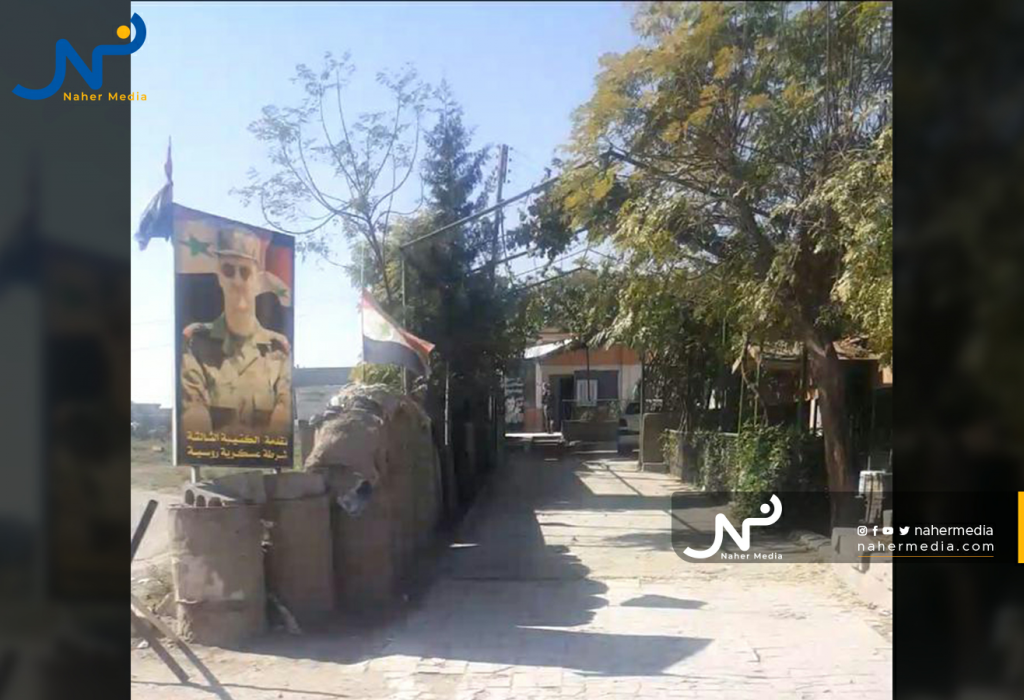
The home of Aswad Sa’eed al-Habboud, which has been seized by the 3rd Battalion of the Russian Military Police in Bouqras town in rural, eastern Deir Ezzor – by Naher Media correspondent’s camera
At the beginning of last season, some organisations such as (OXFAM) and (Greek Orthodox Patriarchate of Antioch and All the East ‘Ghaba Dureid’) have carried out several agricultural projects in the region to benefit the locals from irrigation projects. Additionally, the regime peasant associations distributed seeds and fertilises in exchange for money, prompting numerous locals to register fake lands in order to obtain additional quantities of fertilisers and seeds. After the season ended, the peasant associations responded to this by coercing famers into supplying wheat quantities in accordance with the (fake) lands that were registered in the association at the beginning of the planting season, which was a nightmare for Deir Ezzor countryside farmers: some of them were jailed after the associations resorted to security branches to detain whoever refrains from suppling the regime with wheat, and some farmers were even threatened to have their own real lands seized in case they refuse to provide the required wheat amounts – the case has not been resolved yet.
Selling lands and real property in Deir Ezzor and the Iran’s role in these operations
Recently, selling properties, especially farmlands or real property, has spiked in the regime-held areas of Deir Ezzor as a result of several factors, the most significant of which are: the economic collapse dominating the areas controlled by the regime and the militias, the abject poverty in its areas, the real property owners’ need for money in the areas to which they have been displaced and sought refuge, the military nature that is beginning to prevail over Deir Ezzor province in the territory held by the regime and the militias, the absence of the state laws, the prevalence of the law of the arms and, most importantly, the fact that a large percentage of the owners of this real property oppose the regime and their return is almost impossible as long as the regime is still there, the lengthy duration of their displacement and the need to start a fresh life away from the regime territory.
As for selling farmlands, the reason why this is on the rise is caused by the deteriorating agriculture in those regions, the difficulty of cultivating them, the diminishing crops, problems arising from water shortage, the rising costs of tillage and seeds and the absence of government support. All these foregoing factors have contributed to pushing a number of Deir Ezzor locals to sell their homes, and the buyers were either from Deir Ezzor itself residing in the Gulf or Europe or Iran-mandated local real property traders.
Young man A.’A from Al Asharah in rural, eastern Deir Ezzor says:
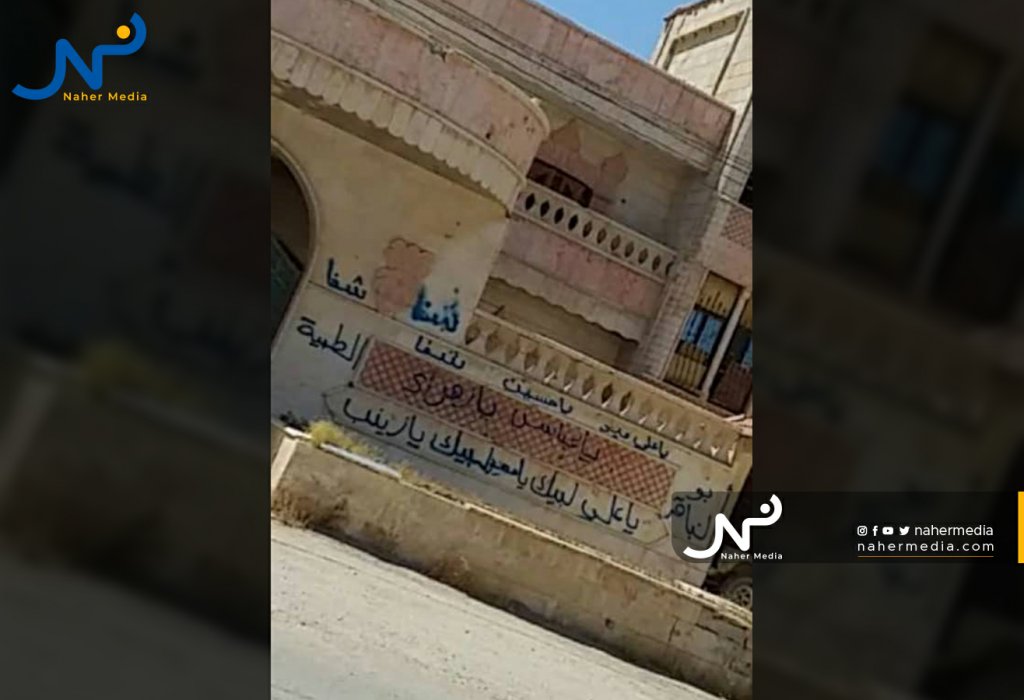
The home of ‘Eed al-Ash’ab, which has been appropriated by the Lebanese Hezbollah militia in Al Bukamal city – by the camera of Naher Media correspondent
‘My father was coerced into selling our home in the city for 35 million SP although its real value is thrice this amount, considering its area, location and construction. However, his need to cover the displacement costs, and our inability to return to it since we are wanted by the regime pushed him to accept this amount and to sell the house.’
Through some of its men in Deir Ezzor in addition to a number of local brokers, Iran has sought to acquire a number of farmlands and real property in Deir Ezzor by purchasing them, some of which have been mystified, for the brokers refused to divulge the real owners. On the other hand, some deals, such as the ones that have occurred in Al Bukamal countryside, became known to the public as Naher Media has documented through its sources purchases of lands in al-Heri area in Al Bukamal countryside by the IRGC militia security official, the so-called ‘Hajj ‘Askar’. Some of the most important of these were: a 30- dunam land Hajj ‘Askar bought for 400 million SP, a house for an al-Heri town inhabitant named ‘Mahmoud al-Madallah’ bought for 35 million SP and two houses belonging to the two brothers ‘Fawwaz and Awwad al-Ahmad al-Bajijjah’ purchased for 160 million SP. ‘‘Askar has also bought al-Farouq ice factory in al-Heri which belonged to ‘Saud al-Manadi for 500 million SP, and 40 dunams of farmland for al-Shawaji family for one billion SP.
Regarding ‘Hajj Amir’, a military commander in the Iranian militias in Al Bukamal, situated east of Deir Ezzor, he has also purchased a number of real properties, the most important of which were ‘al-Zawwaz petrol station’ previously owned by ‘Hussein al-Zawwaz’ for $100,000 and located in the main street of al-Sukkariya village at the western entrance of Al Bukamal city, as well as a number of abodes in the village.
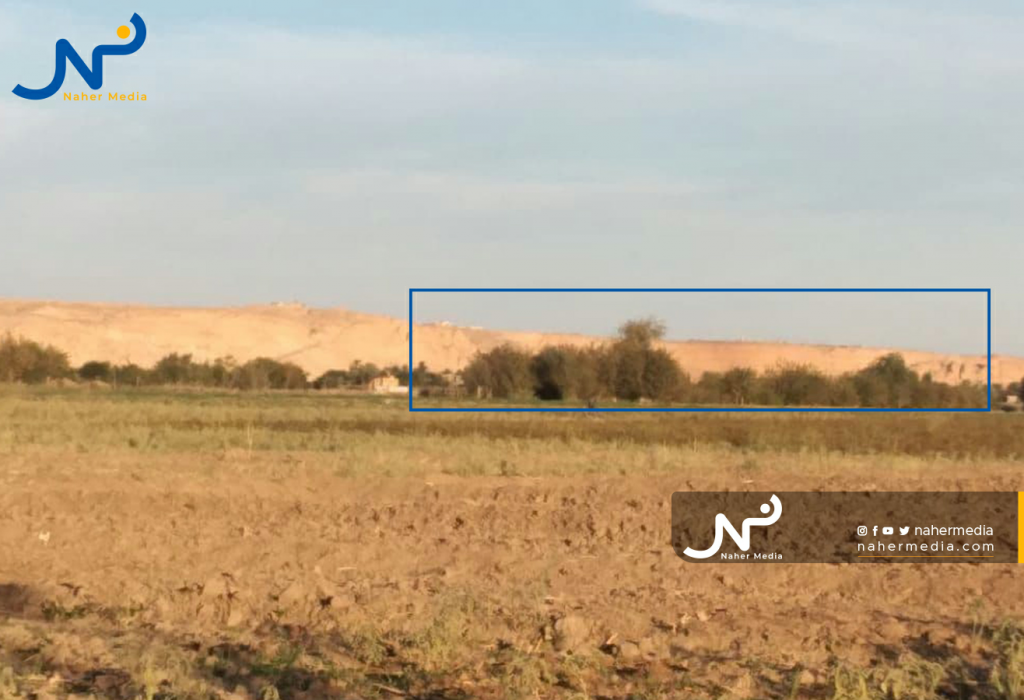
A land and a group of houses whose area is 40 dunams have been purchased in al-Heri town near the Euphrates River opposite the IC base in al-Baghuz town by ‘Hajj ‘Askar’, the commander of the IRGC militia – by the camera of Naher Media correspondent
Both the deteriorating economic and security situation, in addition to the aforementioned reasons, have led to a huge devaluation of real property prices in the regime-held part of Deir Ezzor province as their prices have decreased in value by over 300% compared to the past and the price of a dunam is barely $750 whereas it used to range between $1000 and $4000 depending on the location and type of property. Abu Ayman, a local from Al Mayadin city, to the east of Deir Ezzor says: ‘Our neighbour in Al Mayadin city sold his home last week for $2500 whereas the real price of his house in the past was approximately $15,000.’
How lands and real property are purchased in Deir Ezzor
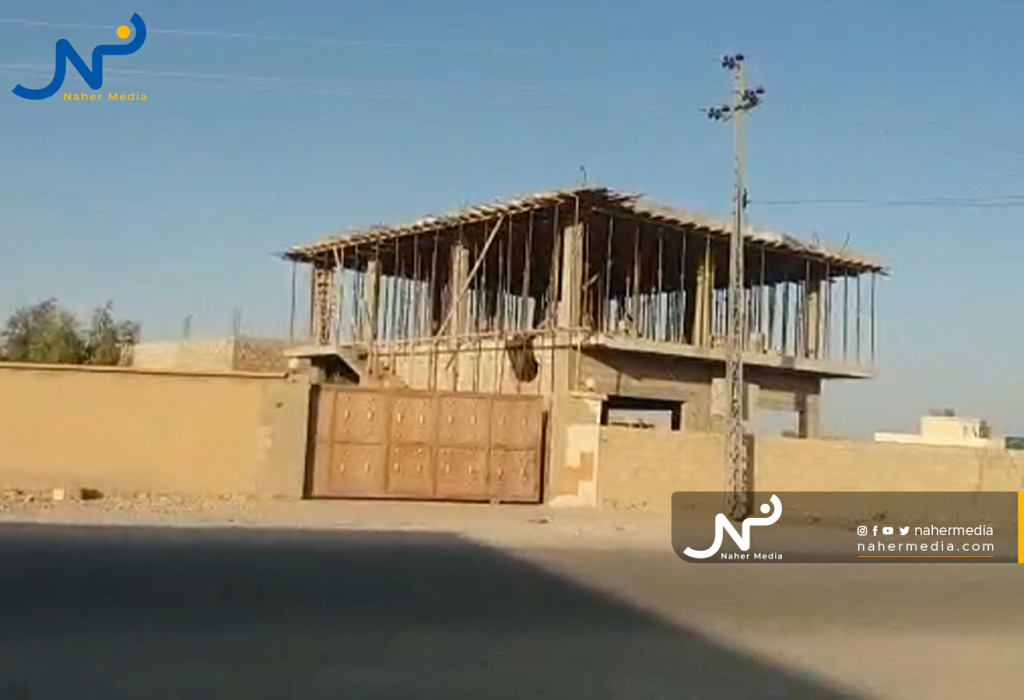
The project of a hotel and a hussainia commenced by the IRGC militia on the main street of al-Heri town near the Syrian-Iraqi border following the purchase of a land whose area is nearly one dunam from al-Khallawi family – by the camera of Naher Media correspondent
As reported by Naher Media via information from its correspondents and some collaborators, there are two ways of purchasing lands and real property in Deir Ezzor: first, a legal, legitimate process conducted in real property offices located in the region as the owners of these offices exploit the aggravating economic situation and the desire of some residents to sell their real property and migrate to live abroad, thereby buying what is offered for sale at very low prices.
Second, the Iranian militias recruit brokers for this purpose whereby real property and lands are purchased by local brokers who transfer the ownership afterwards to Iranian persons who are often militia commanders or officials in centres affiliated with Iranian militias. One of the most prominent brokers among them is ‘Khaled al-Hajeej’ and ‘Khaled al-Jwayyed’ from Al Asharah city, east of Deir Ezzor, who are close to the ‘IRGC’ militia, and one of the most active people in this field in Al Bukamal city is a lawyer (it is vital that we obtain his name; the son of Dir’ al-Dandal) and a person called ‘Abu al-’Ees’, the commander of the Hashimiyoun militia, one of most active real property brokering for the Iranians.‘Al-Taqwa’ and ‘al-Burj’ real property offices are active in Al Mayadin city in purchasing homes (If it would be possible to obtain the names of brokers in Deir Ezzor city centre, Muhasan or Al Mayadin).
Selling lands and real property is carried out via the owners’ first-degree relatives (a brother, sister, paternal or maternal uncle), granting them power of attorney by preparing a document called ‘proxy’ in the Justice Palace, authorising them to forsake their properties and to transfer them to a new owner, and this paper grants a given person all powers to make any decisions on his/her behalf. Upon obtaining a ‘proxy’ document, an advertisement is placed in real property offices for the purpose of selling and receiving prospective buyers.
The militias’ appropriation of houses and lands in Deir Ezzor
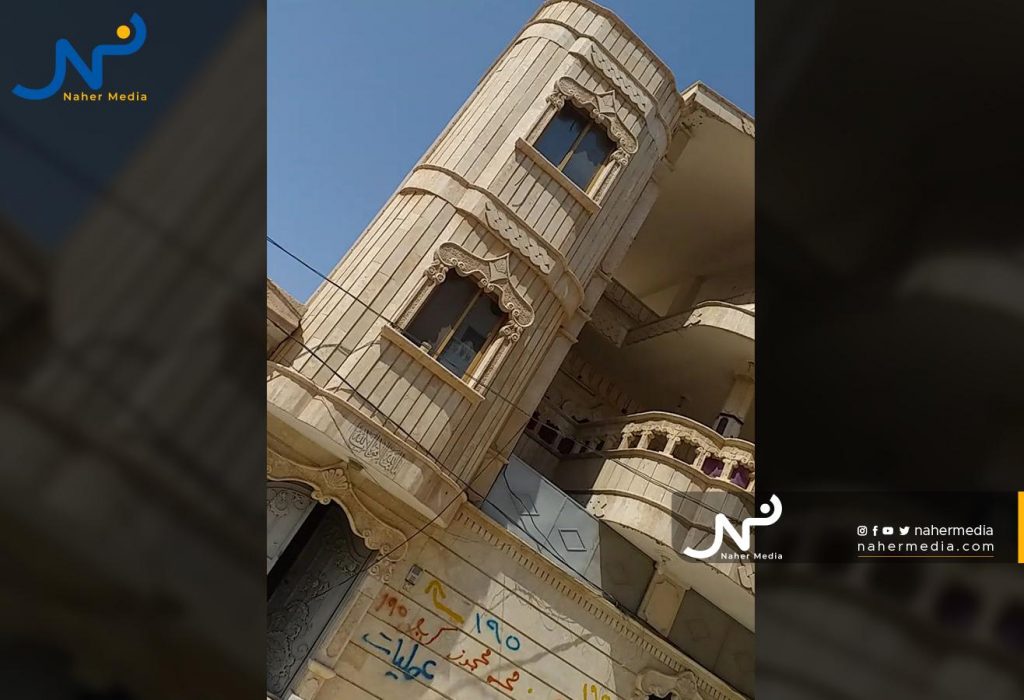
Since the regime regained control of Deir Ezzor, it has spared no effort in seizing the property of its opponents whom it has displaced from their regions so much as not only the Iranian militias but also Russian forces have followed suit.
For example, in Deir Ezzor city the Iranian militias have appropriated homes belonging to opposition figures or people residing outside the regime territory,
and in Al Mayadin city the Iranian militias have seized a number of houses in al-Timmo neighbourhood, housing the security square of these militias. Likewise, the Fatemiyoun militia has taken control over a number of houses of IDPs opposing the regime in al-Arba’een St. in Al Mayadin and converted them into arms depots and headquarters for themselves, in addition to taking control over homes in the well-known al-Burj Building and utilising it for the accommodation of its leaders, as well as other houses nearby ‘al-Finnesh’ Roundabout.
The Iranian militias have also confiscated farmlands in al-Mazare’ area, south of Al Mayadin, and handed them over to (al-Bina’ wa al-Jihad) Association in order to build hotels for the Shia visitors coming from Iraq and Iran.

Al-Qimma petrol station – owned by Hasan al-Kassar – was seized by the IRGC-aligned al-Abbas Brigade militia in Al Asharah city, east of Deir Ezzor. – by Naher Media correspondent’s camera.
Moreover, the Iranian militias did not stop at seizing lands and houses in Deir Ezzor but have gone beyond this through the hegemony of individual Iranian figures over some homes and real property, just as the commander of the Abu al-Fadl al-Abbas militia, who seized farmlands in Bouqras town, west of Al Mayadin city, and invested in it personally as members of his militia cultivate the land and carry out the required agricultural work.
In the same city, i.e., Al Mayadin, Russian forces have had a share in the homes of the IDPs: they have appropriated ‘al-Su’aibi’ buildings, which are excellent residential houses at the city entrance of Al Mayadin and turned them into military headquarters in addition to forming a tight security cordon around them, permanently blocking the way of the civilians in that area. Recently, the 3rd Battalion of the Russian Military Police has seized homes in al-Cornish St. in the vicinity of the mall and taken six houses belonging to persons living abroad in Bouqras town in rural, eastern Deir Ezzor, and turned the houses into headquarters for the battalion’s command.

The home of the officer who defected from the Assad army ‘Omar Tarrad’; it was captured by the IRGC militia and turned into a private hospital for their members in Al Asharah city – and al-Abbas militia is tasked with guarding it at the present time – by the camera of Naher Media’s correspondent
In Al Asharah city in eastern Deir Ezzor, the Fatemiyoun militia has taken two homes: one of them belongs to a famous family known as ‘al-Oraini’ and the second one is owned by a man named ‘Majed al-Hannoush’, and it turned both houses into headquarters for itself.
In Al Bukamal city, the Air Force Intelligence Service and the Iranian militias have seized a number of houses belonging to both ‘al-Ash’ab’ and ‘al-Bdeiwi’ families on the pretext that their owners are affiliated with terrorist organisations – the Free Army – and these houses have been turned into headquarters and depots.
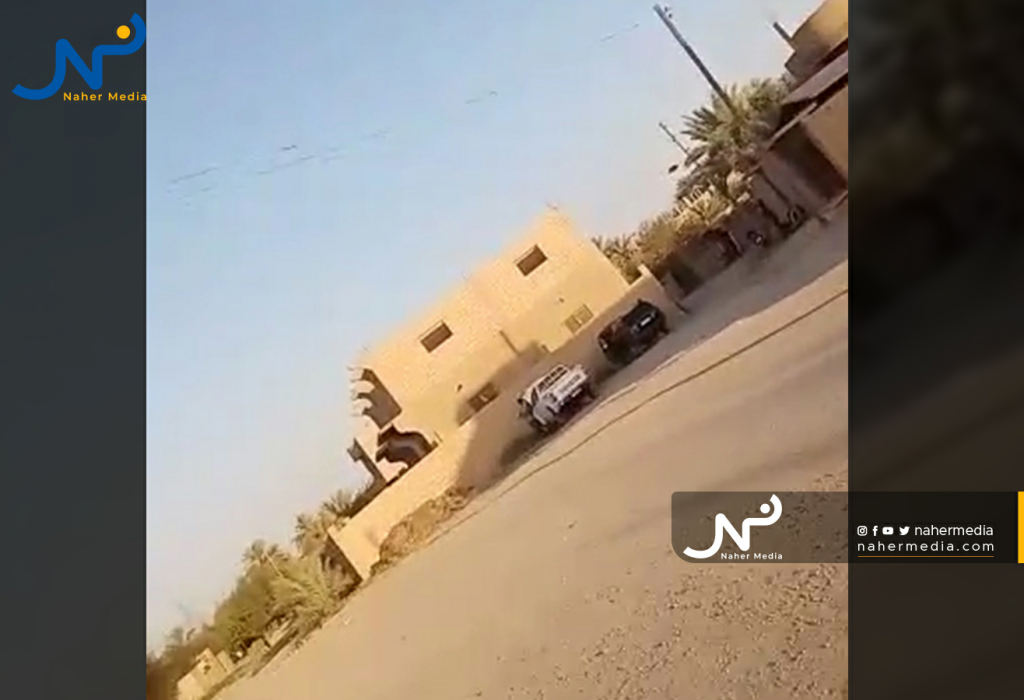
Majed al-Fannoush’s home, which has been taken by the Fatemiyoun militia in Al Asharah city, east of Deir Ezzor – by the camera of Naher Media’s correspondent
Conclusion
In the light of the above, we can say that the Assad regime has persistently appropriated real property and farmlands owned by opposition IDPs and rebels in Deir Ezzor for three goals: first as both financial and moral penalty due to their opposition of the regime. The second one is to secure the cultivating of abandoned agricultural areas and benefiting from their annual harvests in the light of the deteriorating economic situation in the regime territory in Syria in general and Deir Ezzor in particular. The third goal can be attributed to the fact that the regime utilises the yearly rents of these lands by leasing them through tenders advertised through its departments.
Regarding the real property confiscated by the regime in Deir Ezzor, its use has been confined to employing it for serving the Assad forces and the militias aligned with them by transforming them into weapons caches, headquarters and residential buildings for the families, members, and commanders of the foreign Iranian militias or for those who are from outside Deir Ezzor province.
In view of the foregoing, we conclude that the regime’s, Iran’s and the other militias’ appropriation of farmlands and real property in Deir Ezzor does not constitute a demographic change per seas it is in essence a utilisation and investment in these areas. Rather, the demographic change has been implemented by the regime, with help from Russian and Iran in Deir Ezzor since 2017 when it displaced more than 90% of the residents of the southern bank of the Euphrates River in Deir Ezzor through the devastating war machine, as well as tightening security, which eventually end in perennial dungeons.
 Naher media Naher media
Naher media Naher media

